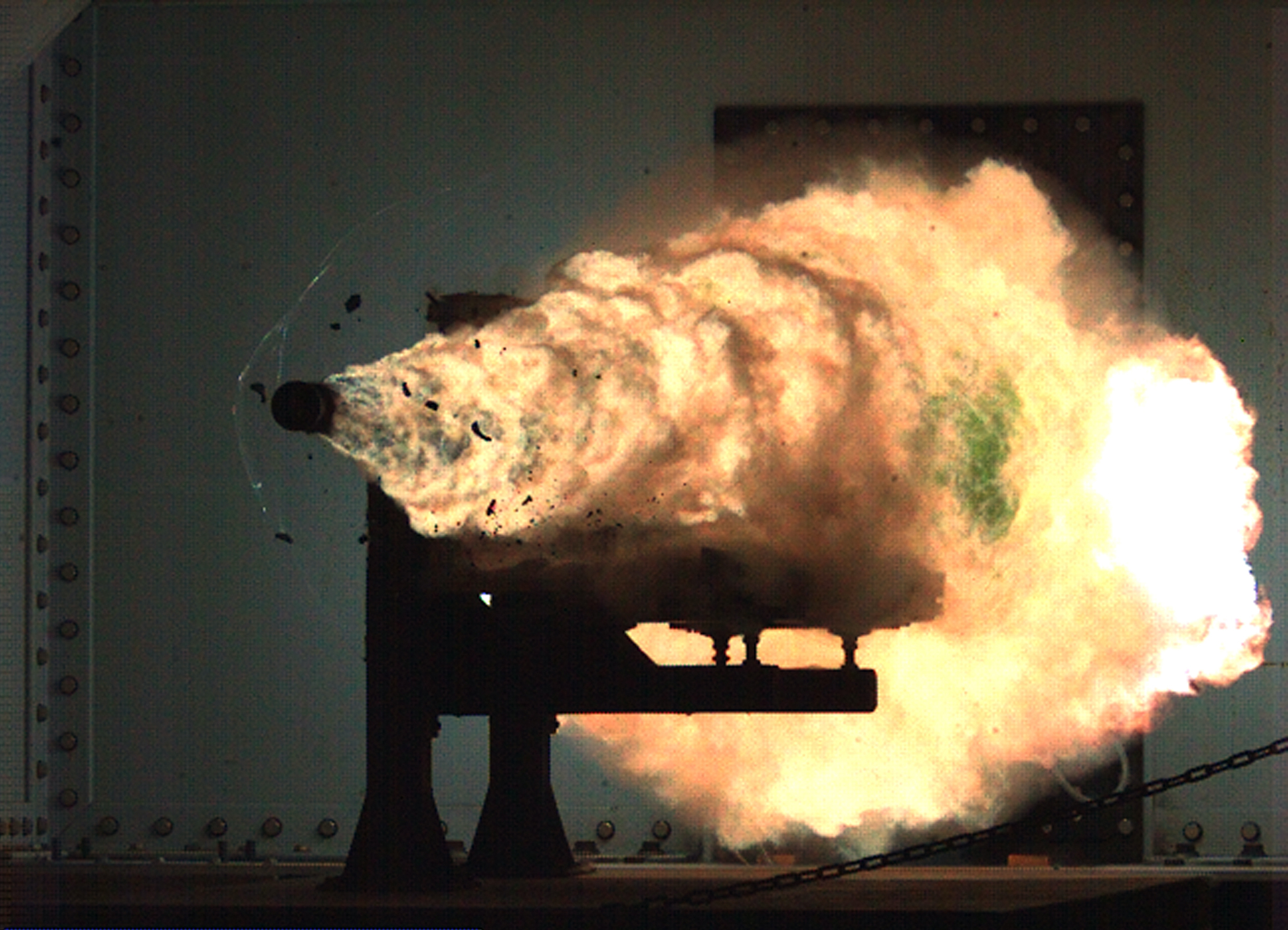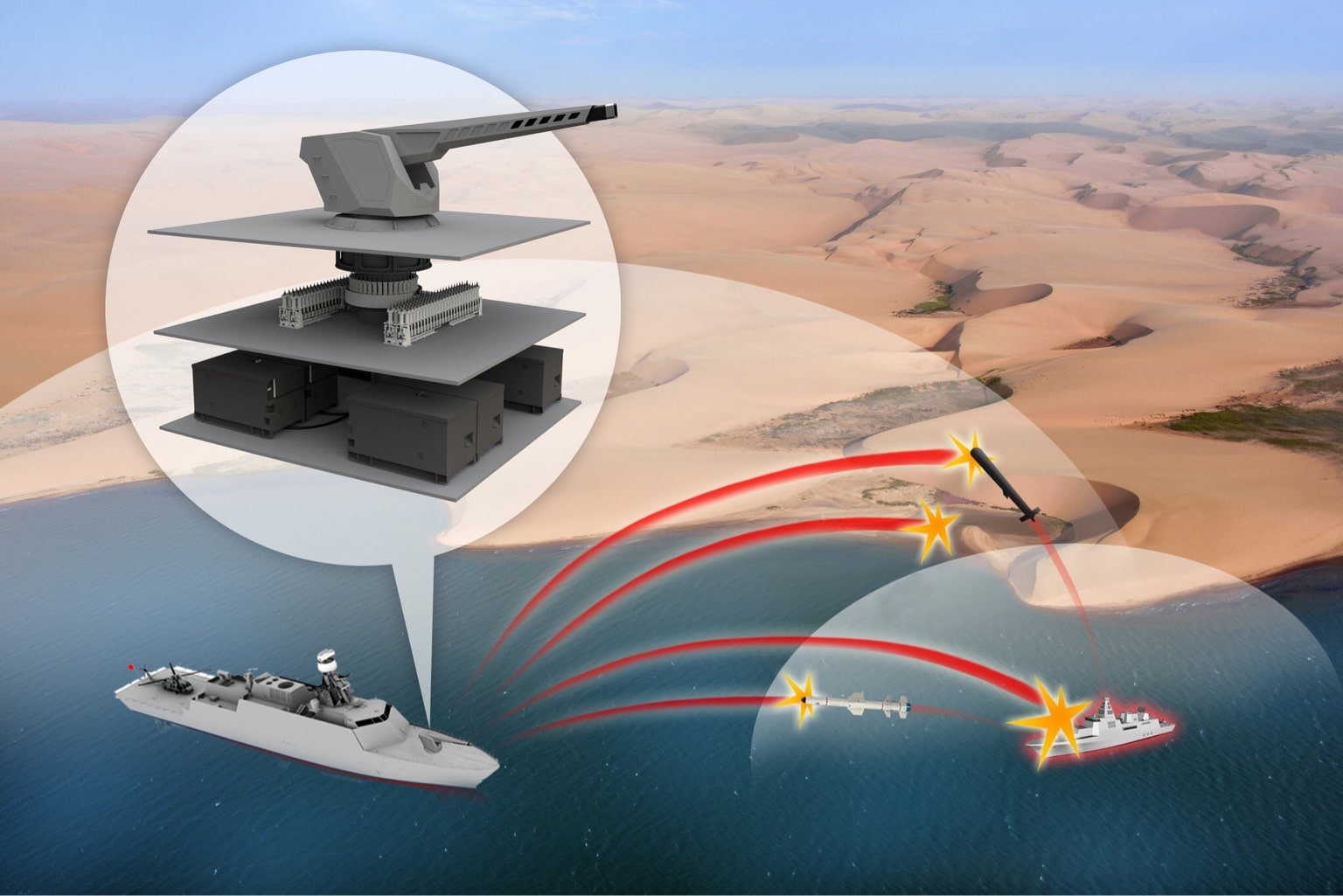Rail Guns Navy - Pentagon: Imagine 35 pounds of steel traveling at Mach 5.8. Ten shots per minute. 1,000 shots before the barrel wears out under high pressure. That's the firepower the Navy's rail program aims to deliver over the next two years, and they're looking good.
"We're constantly making technological advances," said Tom Boucher, director of the Naval Research Program. Boucher and an assistant briefed me on the heated field at the Pentagon, which hosts the annual DoD Lab Day — a kind of military-grade science.
Rail Guns Navy

Three years ago, Navy Chief Jonathan Greenert announced that the railguns — which fire electric guns instead of guns — were so close to combat readiness that he wanted to test one at sea. The Navy changed, deciding that land-based test sites would provide more and better data for less dollars than being randomly loaded onto a fast carrier (known as a JHSV or EFP). So on Nov. 17, a new 32-megajoule gun developed by BAE Systems fired its first shot near the Potomac River at the Naval Surface Warfare Center in Dahlgren. (Watch the video above). A second gun is installed at the White Sands Missile Site in the New Mexico desert, where there is enough open space to fire the weapon at its maximum velocity over a hundred nautical miles.
Forget Railguns: Why The Us Navy Is All In On Lasers And Hypersonic Missiles
While White Sands is testing the projectile's long-term performance, Dahlgren will work on the projectile itself. Earlier experimental weapons resembled medieval bombs, firing only a few times a day. Dahlgren's team is now producing dozens of shots per hour while working on the bugs, and they hope to reach a goal of 10 shots per minute by the end of the year. By comparison, a standard 5-inch gun could fire 20 rounds per minute, even a minute before its quick-loading drum was empty; The 16-inch guns on the battleship fired twice a minute.
Once they reach 10 minutes per minute, Dahlgren switches to barrel life. Ten years ago, test pistols typically fired their barrels with a single shot. With new materials capable of withstanding higher pressures, the barrels of current experimental weapons can last hundreds of rounds before being replaced—about 16 barrels lasted warships in World War II. The target is a barrel that holds 1,000 rounds.
The next big question—beyond the scope of the current testing program—is power. Current railguns fire a 16 kg slug (roughly, 35 pounds at Mag 5.8) at 2,000 meters per second, which takes 32 megajoules of energy per shot. Firing 10 guns per minute requires 20 megawatts of electricity. Unfortunately, the only ships with adequate power in today's fleet are nuclear-powered aircraft carriers — only 11 of which are operational — and
All in all, firing a railgun is useless. A model may be Dahlgren's, where the Navy has installed several 20-foot CONEX cables, suitable for fifty guns. Retired naval strategist Brian Clark has proposed such a solution, turning EFP transports into gun emplacements ready to fire incoming missiles.
World's First Automatic Railgun Tested By Us Navy The Firearm Blog
However, in recent times, not only the Navy, but also the Army has wanted to capture some of the advantages of railgun technology with existing artillery. Sponsored by the Pentagon's Office of Energy, the two services are testing high-velocity projectiles designed to be fired from 5" inch naval guns and 155 mm (6″) howitzers. (Similar to the HVP itself, but encased in a different flight package called a sabot). Using a gun instead of an electric trigger, the muzzle Velocity is low, meaning the projectile doesn't escape the atmosphere and fly long distances without colliding. However, the 5″ gun fires the HVP up to 30 nautical miles further than normal.
The gun-driven HVP is insufficient to replace the rail gun in all areas. An electrically-launched weapon not only moves forward but also hits hard, making a high-explosive warhead unnecessary for most targets. But for critical missions, such as firing anti-ship missiles, conventional hyper-velocity missiles can play an important role as a secondary defense system beyond 30 miles. In addition, up to 100 kilometers, the main guns of the train are held with great power.
As the Army's A-PNT registration program currently focuses on one segment of tactical vehicles, a temporary solution is available to address this threat.

The meeting of the British Defense Council asked about concerns brought about by the war in Ukraine, the situation of British tanks (some in Ukraine) and a possible recovery for the Ajax vehicle program. Designed as a weapon, it uses electrical energy to launch high-velocity projectiles. Projectiles typically do not contain explosives, relying instead on the projectile's high velocity, mass, and kinetic energy.
The Us Navy Is Open To The Public For A Railgun That Can Shoot Cannonballs 200 Km Ahead Of Seven Speeds Of Sound
A rail gun uses parallel conductors (rails) where the sliding device is accelerated by curt electromagnetic effects down one rail to the reverse arm section on the other rail. It is based on the same principles as the homopolar motor.
As of 2020, railguns have been researched as weapons that use electrical energy to impart very high kinetic energy to the projectile (eg APFSDS) instead of using propellants. Military rifles with explosives could achieve muzzle velocities no higher than ≈2 km/s (Mach 5.9), while railguns could exceed 3 km/s (Mach 8.8). For the same projectile, the range of railguns can be greater than that of variable-velocity guns. The destructive power of a projectile is multiplied by its kinetic energy (the mass of the projectile multiplied by its velocity, divided by 2) at the point of impact. Due to the extremely high velocity of the gun produced, its power is greater than that of guns of the same weight. Explosive propellants such as low cost of projectiles compared to conventional weapons are useful in owning and holding warships.
Railguns are still in the research stage after decades of R&D, and it remains to be seen whether they will be used as effective military weapons in the future. Any evaluation of the trade-off between electromagnetic (EM) systems and chemical propellants for weapons use must be long-term for its availability and economics, as well as innovation, scale, high power requirements, and complexity of electrical equipment. . For electric power systems.
No additional field windings (or permanent magnets) are used in this. This basic configuration is generated by a single curt wave, so large curts (e.g. on the order of a million amperes) are required to produce sufficient accelerations (and muzzle velocity). A more common variation of this arrangement is the augmented train gun, in which the driving current is carried by an additional pair of parallel conductors, arranged to augment ('augmt') the magnetic field in which the armature moves.
This Is Why The Navy Can't Have Nice Railguns
These systems reduce the rate required for giv acceleration. Based on the electric motor, boosted rail guns are usually a multi-wound system. Some railguns also use powerful neodymium magnets with a field around the curd flow to add energy to the projectile.
The armature may be an integral part of the projectile, but it may be arranged to accelerate the projectile separately, independently, or passively. Solid, metallic gliding projectiles are usually the preferred form of railguns, but plasma or 'hybrid' weapons can be used.
A plasma device consists of an arc of ionized gas that is used to propel a solid, inert charge similar to the pressure of the propellant gas in a conventional gun. The hybrid armature uses a pair of plasma contacts to connect the metal shield to the gun rail. Solid armor "evolves" into hybrid armor, usually after a certain speed has passed. The high current required to drive a rail gun can be provided by a variety of power supply technologies such as capacitors, pulse generators, and disk generators.

For military applications, railguns are often of interest because they can achieve higher velocities than guns powered by compatible chemical propellants. Increased muzzle velocity with aerodynamically optimized projectiles would allow the use of kinetic energy rounds incorporating a kill guide as a substitute for increased velocity explosive shells, depending on the intended effect, while conveying the benefit of increased gun rounds. Thus, typical military gun designs are designed with muzzle velocities of 2,000–3,500 m/s (4,500–7,800 mph; 7,200–12,600 km/h ) with a muzzle power of 5.–50 megajoules (MJ). For comparison, 50 MJ is equivalent to the kinetic energy of a 5 metric school bus.
The Us Navy's Railgun Is Toast. But What About A Mach 3 Bullet?
Navy crib rail cover, what guns do the navy seals use, navy seal toy guns, does the navy use guns, navy rail gun video, navy rail, army navy store guns, us navy ship guns, navy guns, navy blue crib rail cover, navy bed rail, navy rail guns
0 Comments